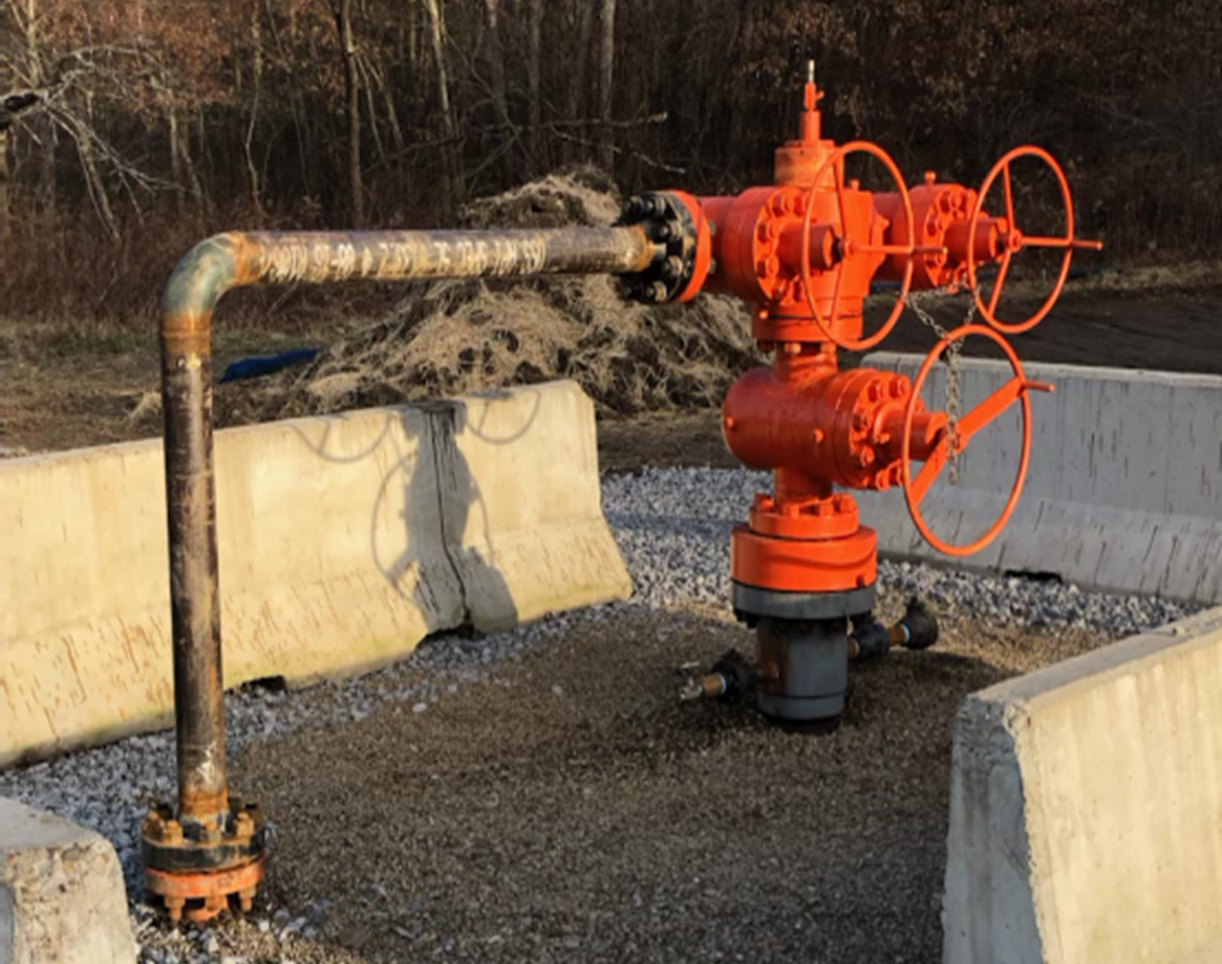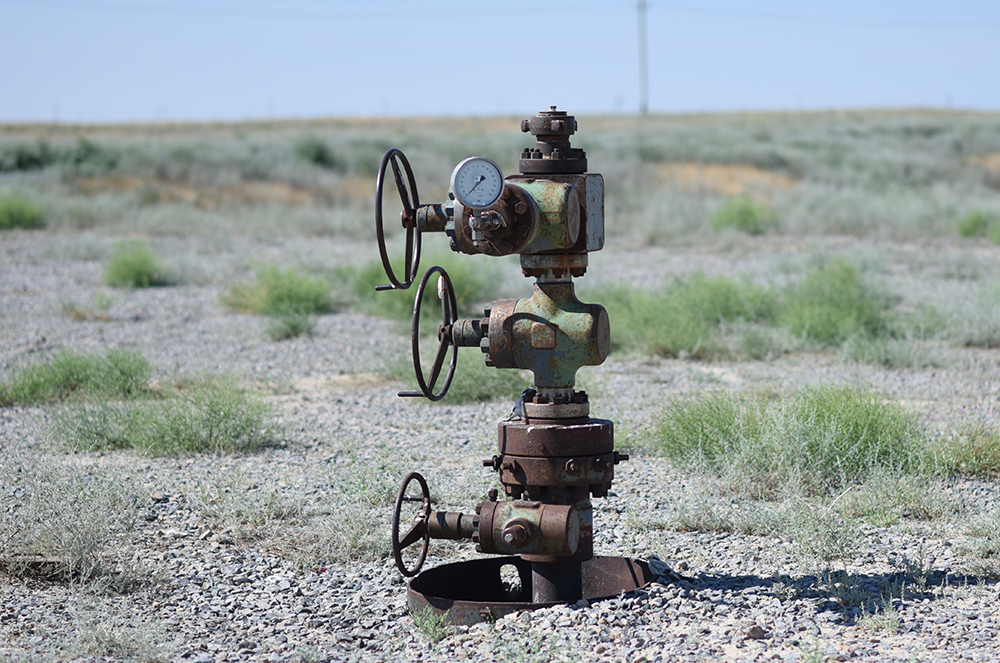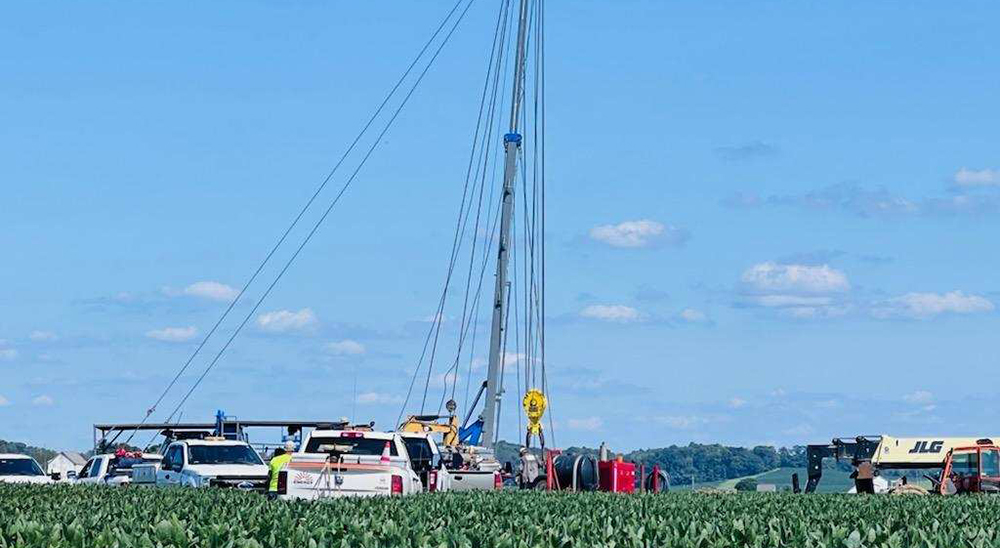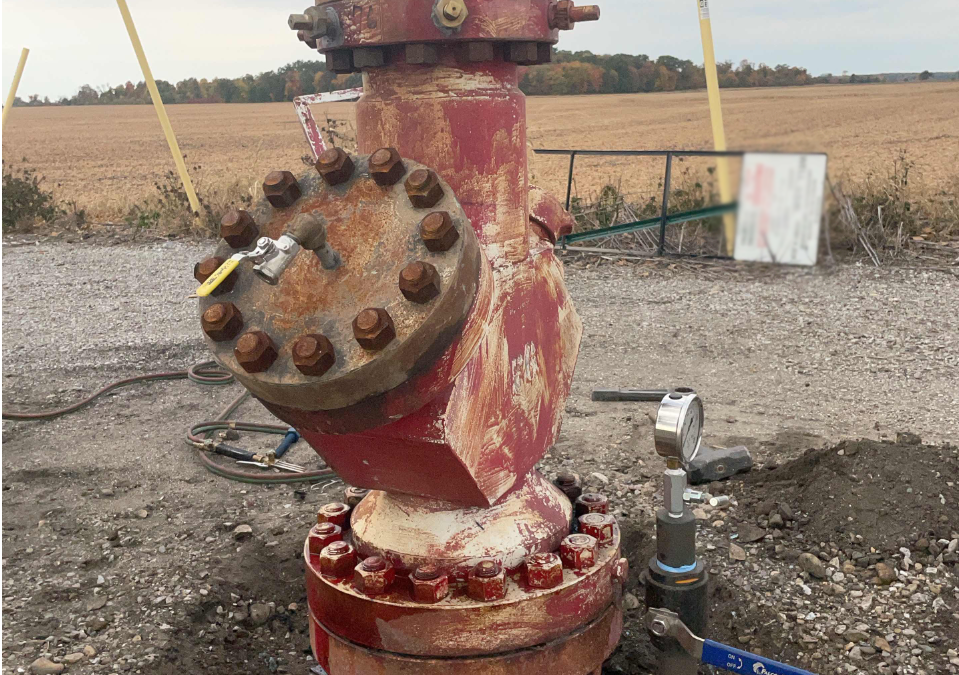Dynamix Engineering and Services Group is uniquely equipped to address some of the challenges in the utility and gas storage & transportation industries. In this blog, we’ve identified six major issues that we encounter when working on projects. By addressing these problems, we aim to ensure our clients meet today’s regulatory standards and are protected from having an incident that makes the news.
The first problem is that companies have an incomplete awareness of current asset conditions.
Can you relate to these:
Do you know if you have a potential newsworthy event brewing in your backyard? Issues that could be caused by rusted shutoff valves, blocked access, or underground deterioration.
Do you have an abundance of small issues that could develop into something larger? Such as pressure gauges that are not accurate or old locks that you don’t have keys to.

Here’s an example of what we found on a customer site:
We arrived to do an onsite evaluation and found a locked-out tag out still in place from the 1990s. There were no keys available. We had to spend time to find out why it was locked out and then had to treat it as if it was a serious problem because no one knew why it was locked out. This cost the project down time and the potential cost is immeasurable.
Don’t let this happen to you. We can come to your sites and do a complete evaluation so you will know the status of your assets.
Another common problem is that companies have is a lack of experienced and trained well supervision staff.
Does this pertain to your company:
Are your employees capable of working in legacy operating conditions? Such as wells that were drilled before the 1980s, valves that have been obsolete for decades, or locations that don’t have open pads to operate on.
Do you know what needs to be done to meet today’s regulatory standards? Such as redundant shut down equipment, emergency egress routes or updated environmental standards.
Here’s an example of what we found on a customer site:
We conducted work for a client where almost all of their well head equipment was obsolete and could no longer be serviced without manufacturing custom parts. Since this was not what they were used to working on, they didn’t have staff who had even seen these parts. We were able to determine legacy parts needed, locate machine shops and manufacture replacement equipment avoiding full well head replacement.

Know that you can rely on our knowledge and skill to handle tough situations that your team may not be familiar with.
Another common problem is that companies are unable to perform the necessary well work.
For example:
Do you have the ability to evaluate your locations? It takes people, time and expertise.
Do you have the right equipment and access to parts you may need? Such as the appropriate tools to gain access or operate legacy well sites and knowledge in obsolete equipment.

After meeting with our multiple clients, we’ve concluded that they are short on time or staff or both, so we offer onsite evaluations where we photograph, catalogue, and create cad drawings of surface equipment.
Before you start your next project or worry about missing a deadline, consider a free job evaluation of your location to save downtime and missed budgets.
Another common problem is that companies have insufficient capability to perform significant well remediation.
Think about this:
Would you need to hire an engineering group to help with the project?
Would you need to hire a construction company to complete the project?
Here’s an example of what we found on a customer site:
We have multiple clients who have preferred vendors that only offer one or two pieces of the operation, whereas Dynamix offers a complete solution. With turnkey project management we are able to design, plan, coordinate and execute each project. This gives our clients one team and one point of contact throughout all operations decreasing downtime and improving efficiency. Saving them time and money.

Another common problem we notice is that companies have inadequate well logging and documentation.
Including this type of documentation:
Are your wells maintained and documented to comply with all applicable state and federal regulatory and safety standards? Such as PUC, state division of oil and gas, DOT, FERC, PHMSA 1170 or1171?
Are all emergency response protocols and procedures documented and do they meet minimum standards? For example, do you have well specific emergency response manuals, call out lists and procedures, dedicated response materials and supplies.

Here’s an example of what we found on a customer site:
We were called out to investigate and quantify a potential leak via a temperature log. The customer provided incorrect well records, and we found upon arrival on site that the entry flange was an obsolete pattern. We were able to locate an appropriate flange and have it on site the next day. If this had been an emergency, that would have been unacceptable.
Don’t let this happen to you.
The final common problem we notice is that companies have insufficient personnel to handle comprehensive project management.
For example:
Can your team create procedural designs, SOP, SOW, site mapping, wellhead drawings, along with maintaining proper record keeping?
Can you manage an entire project and bring appropriate resources to bear to complete the project? Such as Scoping and candidate selection? Obtaining all state, federal and local clearances and permits? Selecting and sourcing vendors, contractors, and materials? Planning, execution and commissioning? Compiling, organizing, and maintaining all pertinent records?
Here’s an example of what we found on a customer site:
We were awarded a surveillance logging program. We found the well records were all there but disorganized and located in various places. We organized the records, determined well specific procedures, obtained all required clearances and permits, prepared the wellheads and lease roads, and executed the logging program. The logging results were compiled and analyzed. This was followed up by identifying two wells that were taken out of service, repaired, and returned to service in time for the operator’s withdrawal season.

Don’t let this happen to you.
If we can be of assistance to you in solving any of these common issues, contact us today or give us a call at 724-716-4111.


